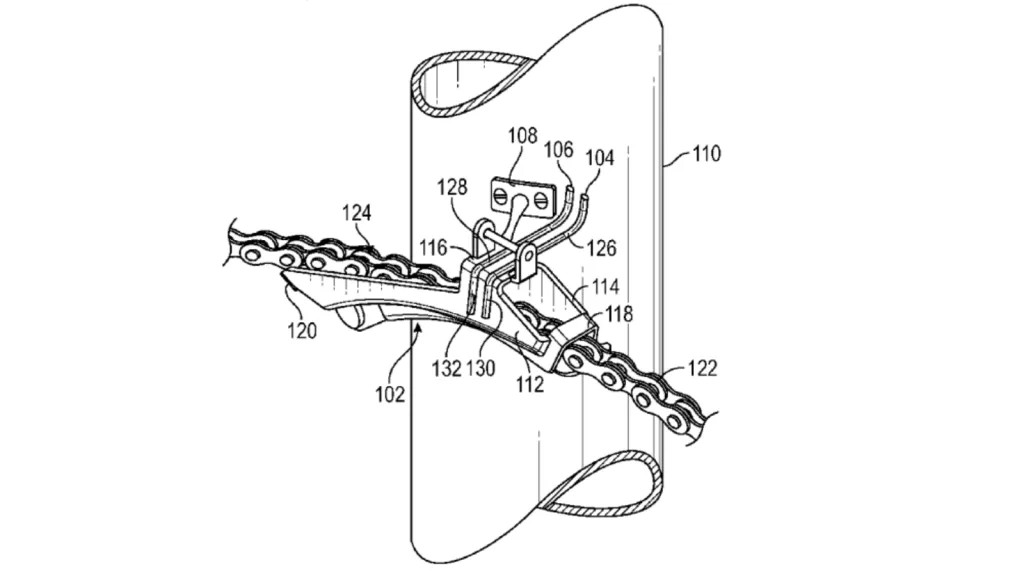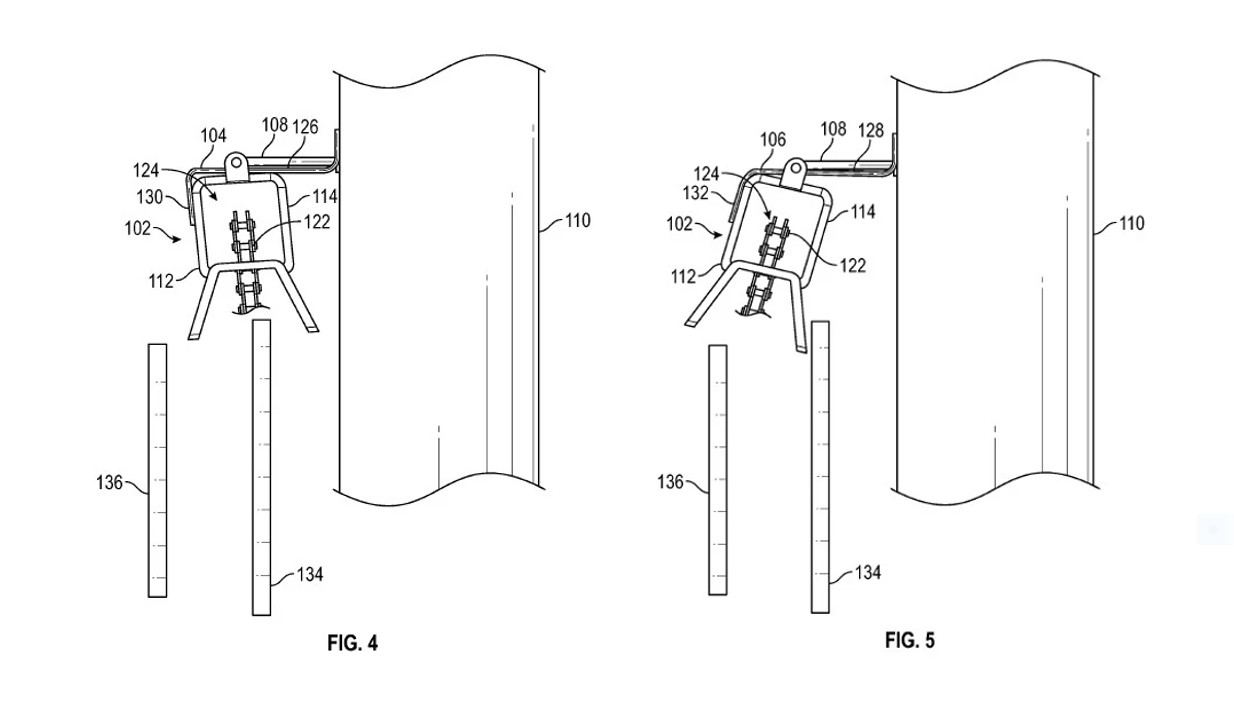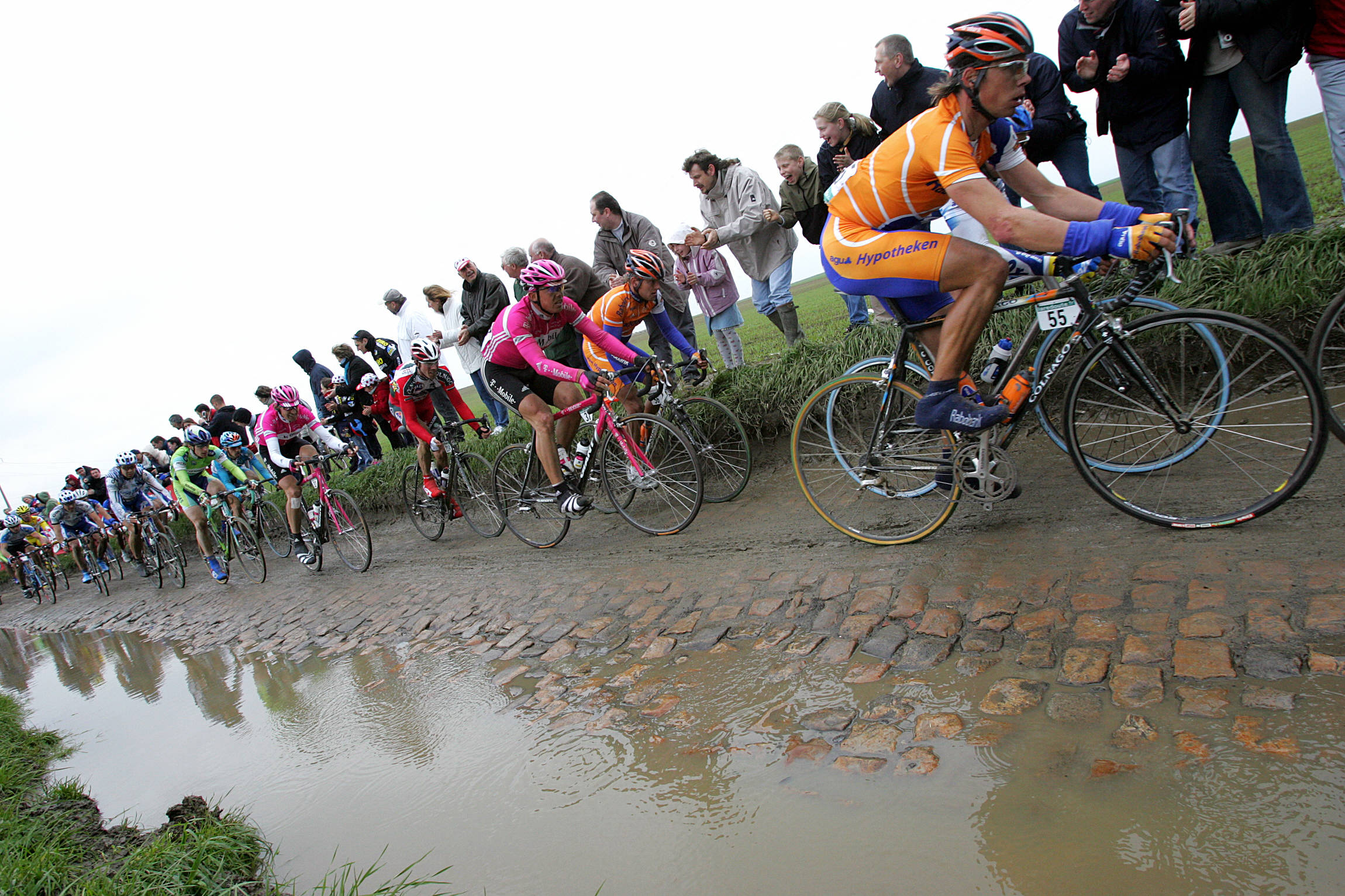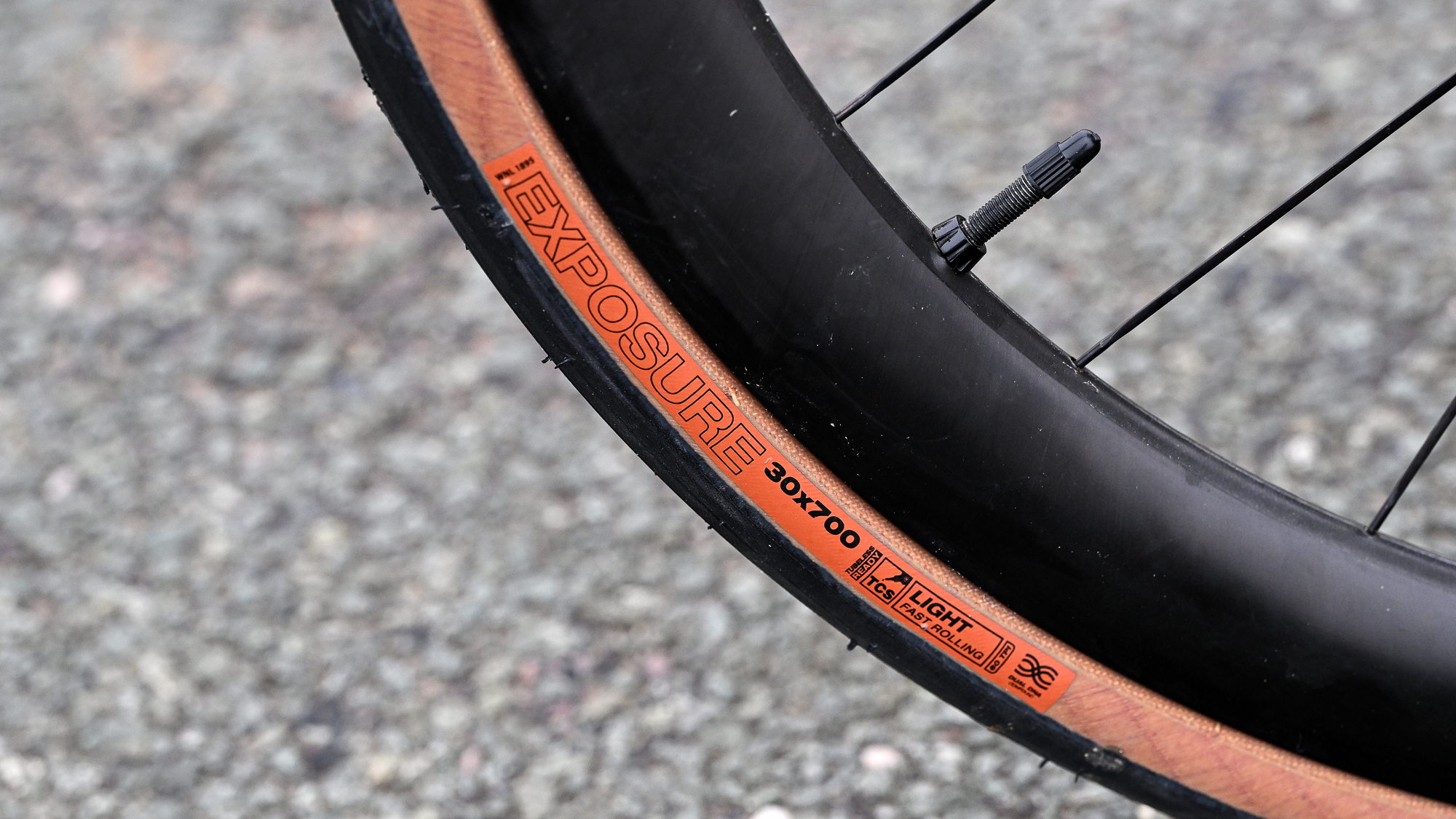Is Ford about to reinvent the bicycle derailleur?
The car manufacturer has registered a patent for a radical new derailleur that uses an electric current to heat up and move mouldable wires


Ford Motor Company appears to have designs on the cycle industry - quite literally - when it registered a US patent for an electronic derailleur that’s unlike any front derailleur we’ve ever seen before: it has neither a cable nor a Di2-style servo to actuate it.
Uncovered by wheelbased.com, the patent - which has already been granted - is for a “bicycle derailleur apparatus for controlling bicycle speed.” Ford’s design uses two mouldable wires made from Nitinol, a nickel titanium alloy which changes shape when an electric current is applied to it. When the wires change shape they move a chain guide, which moves the chain from one chainring to another.
Nitinol is a ‘shape memory alloy’, which can be bent to a particular shape but will return to its original shape when heated. Ford’s design uses one wire with its original shape holding the chain guide in the inner ring position and the other holding it in the outer chainring position. By heating either wire, the chain guide can be moved between chainrings.

According to the patent, for them to change shape the wires will reach "a respective heated state at a predetermined temperature such as around 100 degrees centigrade," but they may have "an outer layer of heat-resistant insulation to prevent migration of heat to the exterior of the mouldable wires" (and potentially burning the rider's leg).
It's an incredibly simple, lightweight and probably cheap solution to shifting a chain between chainrings, but Ford isn't simply planning to eclipse the mechanisms of Shimano, Campagnolo and SRAM.
According to the patent: "Automatic bicycle derailleur chain shifting control apparatuses of various designs have been proposed in the past. However, due to drawbacks in terms of design complexity, excess weight and/or relatively high cost, these apparatuses have experienced only limited acceptance for incorporation on bicycles commonly purchased by casual riders."
With descriptions of a "control panel" and "the cadence of a casual rider" and "automatic sprocket shifting" the Ford derailleur appears to be aimed at the e-bike market, representing a very credible stab by a company with a huge amount of R&D muscle not to mention money at producing an efficient, lightweight and low-cost automatic gear system.
Ford describes the way it envisions the automatic system working as follows: "The rider selects the desired pedal cadence on the control panel. The two mouldable wires will perform the automatic sprocket shifting. Based on whether the actual cadence is lower or higher than the selected pedal cadence, the apparatus will send current to the moulded wire to increase heating thereof to alter its configuration to the acute angular shape to shift the derailleur guide to the larger one of the sprocket gears [chainrings]. This is called upshifting."
For downshifting the other wire is heated so that it returns to its original obtuse angle.
In each case, the unheated wire returns to its "pliable" state and doesn't provide an opposing force to the heated wire.
Heat would continue to be supplied to the operational wire periodically but not constantly in order for it to maintain its heated state and keep the chain guide in position. The system would be operated by "an electric current generator installable in a pedal crankset of the bicycle."
It's clever stuff, but at the same time devastatingly simple. If a big player such as Ford decided to commit to e-bike development - and it seems likely that this will happen - we can expect to see the pace of innovation shift up a gear.

Thank you for reading 20 articles this month* Join now for unlimited access
Enjoy your first month for just £1 / $1 / €1
*Read 5 free articles per month without a subscription

Join now for unlimited access
Try first month for just £1 / $1 / €1
Get The Leadout Newsletter
The latest race content, interviews, features, reviews and expert buying guides, direct to your inbox!
Simon Smythe is a hugely experienced cycling tech writer, who has been writing for Cycling Weekly since 2003. Until recently he was our senior tech writer. In his cycling career Simon has mostly focused on time trialling with a national medal, a few open wins and his club's 30-mile record in his palmares. These days he spends most of his time testing road bikes, or on a tandem doing the school run with his younger son.
-
 'I hope it rains... there's little room for error' - British cycling legend on the prospect of a wet Paris-Roubaix
'I hope it rains... there's little room for error' - British cycling legend on the prospect of a wet Paris-RoubaixSean Yates says that inclement weather won't stop the favourites from winning Roubaix, but that it'll add a bit more excitement
By Adam Becket Published
-
 WTB Exposure TCS - a 'fast adventure road tyre'
WTB Exposure TCS - a 'fast adventure road tyre'The WTB Exposure TCS tyre offers an enticing combination of comfort, speed and durability aimed at pretty much everyone except racers
By Tim Russon Published
